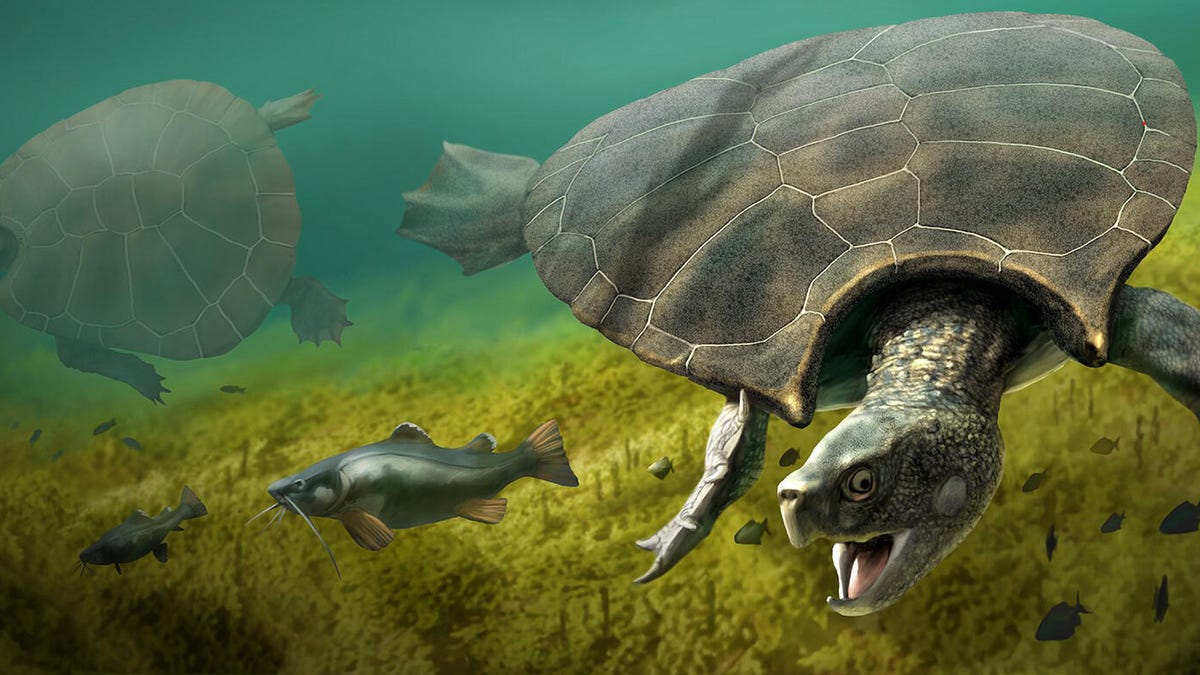Absolute unit of an extinct turtle sported a gigantic horned shell
Check out the mind-blowing photos of the massive fossils.
A name like "Stupendemys geographicus" sets up certain expectations. Newly discovered specimens of this extinct giant turtle show it more than lived up to its moniker.
A team of paleobiologists from the University of Zurich (UZH) in Switzerland studied fossil carapaces from the freshwater turtle, which lived between 5 and 10 million years ago in Venezuela and Columbia. These remnants suggest the turtle shells stretched up to 10 feet (3 meters) and that males had horns at the front of the shells.
Venezuelan palaeontologist Rodolfo Sánchez gives an idea of the size of this male carapace from Stupendemys geographicus.
The researchers published a study on the turtle in the journal Science Advances on Wednesday.
Marcelo Sánchez, study lead and director of the Paleontological Institute and Museum of UZH, said the turtle may be the largest that ever existed.
UZH shared stunning photos of Venezuelan paleontologist Rodolfo Sánchez posing with the hulking fossils.
Scientists first described Stupendemys geographicus in the 1970s. The university called these particular carapaces "exceptional specimens."
The researchers also uncovered jaws and skeletal sections that have helped place the turtles in context. "Based on studies of the turtle anatomy, we now know that some living turtles from the Amazon region are the closest living relatives," said Marcelo Sánchez.
Some of the fossils displayed bite marks and punctures. The turtles might have been massive, but their size didn't necessarily protect them from becoming dinner.
Palaeontologist Rodolfo Sánchez with a male carapace of Stupendemys geographicus found in 8-million-year-old deposits in Venezuela.


